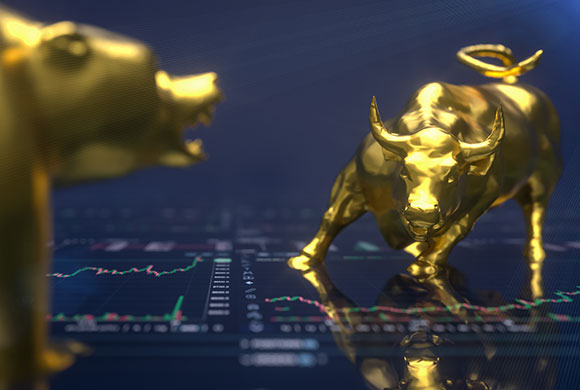Three potential risks to the US economy in 2024
Summary: The economy’s resilience is keeping investors bullish on US stocks. It may be time to prepare for a less favorable scenario.

Key Takeaways:
- Historically high stock valuations reflect investors’ bullish outlook on the US economy.
- However, favorable trends in consumer spending, financial liquidity, and fiscal policy could recede next year.
- Some investors are remaining cautious about high equity valuations and are preparing for interest rates to stay higher for a while.
Throughout 2023, the US economy has stayed resilient in the face of rapid monetary policy tightening, with solid consumer demand and an unflinching labor market. This has stoked investor confidence and helped the S&P 500 Index regain almost all of its 2022 losses. But are these conditions sustainable?
Equity investors seem to think so. Today’s historically high stock valuations reflect a bullishness that leaves little room for any risk to the prospect of a “soft landing,” in which economic growth slows and inflation cools without a recession. In this optimistic scenario, market pricing suggests the Fed will cut interest rates by at least 125 basis points in 2024 while corporate profit growth reaccelerates. In other words, equity investors are not anticipating a recession or an earnings slump–just a new bull market.
However, we believe risks to this scenario remain. The factors driving the continued resilience of the economy in 2023 may be exactly what undermines growth in 2024 as certain favorable economic trends start to unwind.
- Robust consumer spending may decline. Households built up sizable cash piles during the pandemic thanks in part to government stimulus, but those reserves are dwindling. Economists now estimate household savings to be around $350 billion, which could run out by the first quarter of 2024. This coincides with the reinstatement of student loan payments, which may dampen spending, and an aggressive build-up of credit card balances, with interest costs that have soared to historical highs of more than 20%.
- Cash could be in short supply. Although the Federal Reserve has increased rates over the last year in an effort to tame inflation, financial conditions have remained relatively loose, with companies generally able to raise the capital they need. But as the US Treasury restocks its cash reserves, it is likely to issue as much as $1 trillion in debt by the end of 2023’s third quarter. This would drain liquidity from the financial system, making it harder for companies and consumers to borrow. In addition, the Bank of Japan’s recent move to allow the country’s interest rates to rise more freely could drive significant new investment in Japanese government securities and divert potential buyers of US Treasuries, further draining liquidity in the US.
- Fiscal spending could decelerate. Government spending has been a key driver of economic growth recently. However, major spending programs, such as the CHIPS and Science Act and the Infrastructure Investment and Jobs Act, are heavily front-loaded, meaning the economic benefits of such fiscal largesse may recede in 2024. What’s more, the recent downgrade of US government debt by rating agency Fitch suggests future government spending and debt proposals may face greater scrutiny.
What this may mean for investors
With these risks, not to mention the potential for interest rates to stay higher for longer given economic strength, some investors are remaining cautious about:
- high equity valuations
- potentially trimming exposure to the most highly valued stocks. Instead, seek out those with “growth at a reasonable price” or value-style attributes that seem likely to achieve earnings targets.
The source of this article, 3 Risks to the U.S. Economy in 2024, was originally published on August 9, 2024.

